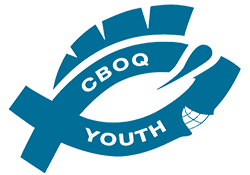The person and message of God isn’t meant just for the body of believers; His grace, mercy and justice is meant to transform all of creation, including the communities surrounding a local church. What good is it to hide the light of Christ where no one else can see?
At last spring’s Youth Pastors Summit, our group of youth pastors focused on how we can impact our communities through youth ministry. They narrowed down the options to these six opportunities:
- Small group service nights (and training…let youth figure it out)
There’s no better way to impact a community than to serve and meet a specific need within it. The fluidity and adaptability of a small group allows youth to gather, discuss, share ideas, identify needs then work out how to strategically meet a specific need. They can do all this without major mobilization. Of course, they can’t just be sent out without being prepared. Training, whether in cross-cultural awareness, understanding the demographics and neighbouring contexts, and any applicable skills, equips and prepares that small group to serve well and with intentionality.
- Include or involved with the whole church
Jesus calls the church to share his gospel and make disciples. Too often, individual ministries within a church operate their own outreach opportunities, and there are times when those programs work well. There is also a strong value when the church as a whole works together. Multi-generational opportunities allow for a greater diversity of relationships and gifts that can be used. Both young and old can learn from one another as they serve together. When working together, those multi-generational bonds enhance faith formation in both children and adults.
- Multi-church involvement (e.g. “Love Willowdale/Langley”)
This is taking #2 to a wider scale. Recently, there have been a series of multi-church movements such as “Love Langley” or “Love Willowdale” that have greatly impacted their local communities. These are large-scale mobilizations among a group of churches seeking to demonstrate God’s love in tangible ways. While it takes time to plan, kind of movement is valuable: it builds relationships between churches and demonstrates a more united image of the Christian faith to the community at large.
- Breakfast at a public school
Public campaigns raise the issue of child hunger. Statistically, one in six school-aged children face hunger every year: 31% of elementary school children do not eat a healthy breakfast before going to school (http://www.breakfastforlearning.ca/how-to-help/child-hunger/). As Christians, we recognize that Jesus didn’t just come to satisfy spiritual hunger, but also to meet people’s needs wholistically (e.g. John 6:1-14). Assisting in a breakfast-club program allows our youth to demonstrate the love of Jesus in a tangible way, and builds trust with those children.
- Christmas activities (e.g. snow shovelling/caroling, food hampers)
For some people, the Christmas season can be the hardest and most isolating season of the year. While there is much to celebrate, we must recognize that for some, that celebration brings heart-felt pain. By serving and coming alongside those individuals or families, we bring the light of Christ to them in a significant way. One caution: Don’t just treat people like a “project,” but offer them dignity and respect by investing into them long-term if they want that kind of relationship.
- Train and live out
Community doesn’t have to just happen through organized programs. Part of discipleship is recognizing how and when God challenges us to serve for his name’s sake in any given moment. Providing students with tools for both discernment and mobilization empowers them to recognize those moments and act on Jesus’ behalf.
What do you do to impact your community?



Leave A Comment